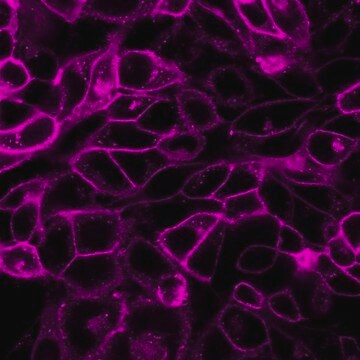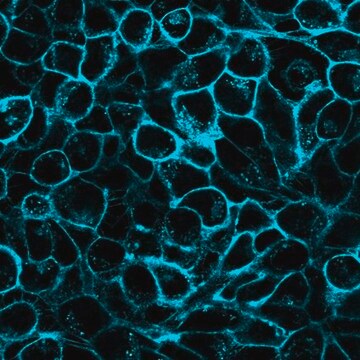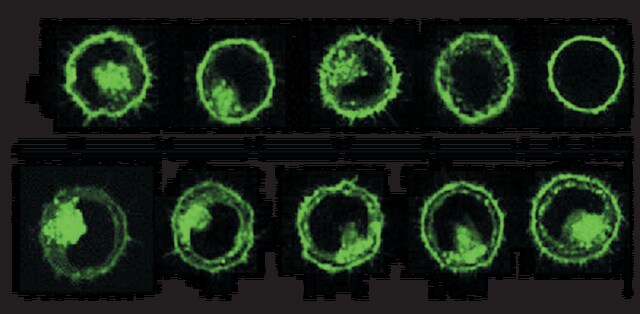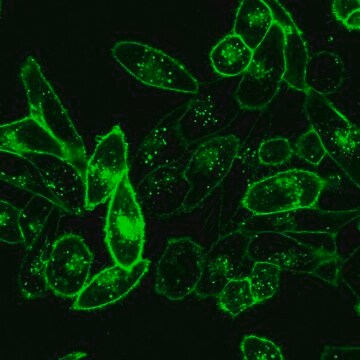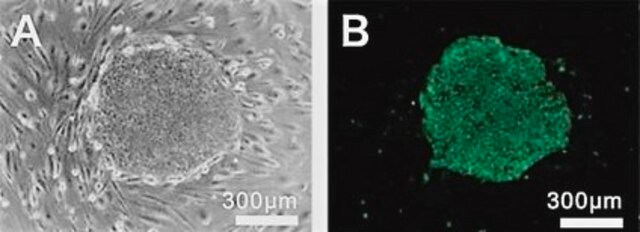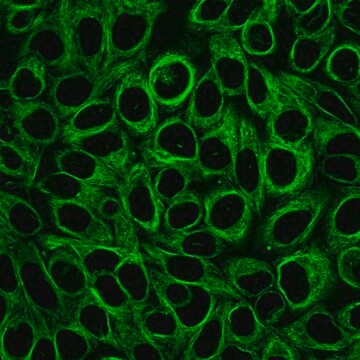MIDCLARET
CellVue® Claret Far Red Fluorescent Cell Linker Midi Kit for General Membrane Labeling
Distributed for Phanos Technologies
Sinonimo/i:
Far red membrane probe kit
About This Item
Prodotti consigliati
Produttore/marchio commerciale
Distributed for Phanos Technologies
Condizioni di stoccaggio
protect from light
tecniche
flow cytometry: suitable
Fluorescenza
λex 655 nm; λem 675 nm
applicazioni
cell analysis
detection
Metodo di rivelazione
fluorometric
Condizioni di spedizione
ambient
Temperatura di conservazione
room temp
Applicazioni
Azioni biochim/fisiol
Confezionamento
Linkage
Note legali
Patent Information
Avvertenze
Danger
Indicazioni di pericolo
Consigli di prudenza
Classi di pericolo
Eye Irrit. 2 - Flam. Liq. 2
Classe di pericolosità dell'acqua (WGK)
WGK 1
Certificati d'analisi (COA)
Cerca il Certificati d'analisi (COA) digitando il numero di lotto/batch corrispondente. I numeri di lotto o di batch sono stampati sull'etichetta dei prodotti dopo la parola ‘Lotto’ o ‘Batch’.
Possiedi già questo prodotto?
I documenti relativi ai prodotti acquistati recentemente sono disponibili nell’Archivio dei documenti.
I clienti hanno visto anche
Articoli
Lipophilic cell tracking dyes enable cancer biologists to track tumor and immune cell functions both in vitro and in vivo. Read the article to choose a right membrane dye kit for cell tracking and proliferation monitoring.
Optimal staining is a key component for studying tumorigenesis and progression. Learn useful tips and techniques for dye applications, including examples from recent studies.
PKH and CellVue® Fluorescent Cell Linker Kits provide fluorescent labeling of live cells over an extended period of time, with no apparent toxic effects.
Il team dei nostri ricercatori vanta grande esperienza in tutte le aree della ricerca quali Life Science, scienza dei materiali, sintesi chimica, cromatografia, discipline analitiche, ecc..
Contatta l'Assistenza Tecnica.

